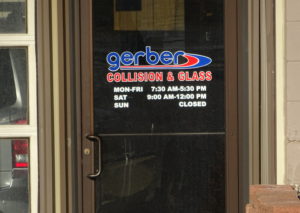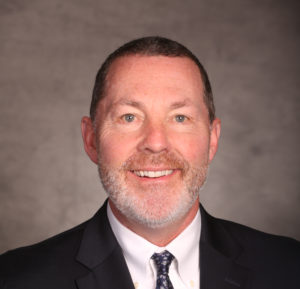
Boyd CEO says carriers understand paying higher repair costs to better compensate techs
By onAnnouncements | Market Trends
During Boyd Group Services’ Q2 2023 earnings call last week, President and CEO Tim O’Day said the company continues to invest money in technicians, through higher compensation and training — the first of which means price increases for customers and insurance carriers.
“While the ability to service demand continues to be constrained by market conditions, new technician training and other initiatives are providing some improved capacity,” O’Day told investors. “However, the path to servicing the level of demand requires continuing increases in technician compensation to attract more labor into the industry and company and this will require continued price increases from our customers. As we address this issue, we will be able to reduce cycle times and better serve our customers.”
A similar discussion on needed training and higher pay occurred during the company’s Q2 2022 earnings call in which O’Day said, “…the industry needs to raise the bar on compensation for skilled labor to retain what we’ve got and to attract that labor from other industries because there’s just not enough capacity right now in the industry and the U.S. to service even reduced levels of demand.”
O’Day said during the Q&A portion of last week’s earnings call that insurance carriers have been working hard to pay Boyd their requested price increases “to allow us to get back to normal levels of profitability and build our workforce.”
“It’s a bit of a moving target,” he said. “We still see tremendous demand for our services and the industry, including Boyd, doesn’t have the workforce that we need to properly service it. We have seen some improvement in length of rental metrics. I think much of that is related to supply chain improvement [and] some to probably improvement in labor capacity. But we’re still not at a point as Boyd, or as an industry, of serving our clients the way that they need to be serviced in order for their customers to be happy. I think that pressure will continue to allow us to pull in price so that we can build a workforce to properly service the marketplace.”
Enterprise reported in July that length of rental reached 17.4 days during Q2 which, for the first time since the onset of the COVID-19 pandemic, is a year-over-year (YoY) decrease; down from 17.7 days last year.
“If you look at our balance sheet, you will see that our investment in work-in-process has been decreasing,” O’Day said. “But I would attribute much of that to improved supply chain and our ability to finish our jobs that may have been suspended for a period of time.”
Boyd’s investments in technology and equipment continue to follow the “hub-and-spoke” business model — a centralized decision-making process on changes in company operations. In this case, evolving with car parc trends and technologies.
“The vehicle parc changes very slowly so as EVs, for example, come into the market, we’ll be well prepared to address the needs that are arising from that on a hub-and-spoke basis,” O’Day said. “As it becomes more predominant, we’ll continue to add to our capacity to service those vehicles.”
O’Day agreed with investor Tamy Chen, of BMO Capital Markets, that those at the forefront of repairs are advanced driver assistance systems (ADAS) scanning and calibrations as well as electric vehicle (EV) servicing and repairs.
Eventually, Boyd hopes to complete calibrations in-house rather than subletting but O’Day said for now, it’s a mix of both, plus offering third-party calibrations through its mobile calibration service. The brick-and-mortar calibration services won’t be ready for at least another 18 months since O’Day said the company won’t be ready to launch that by the end of this year or next.
“I think we’ve talked about putting the infrastructure in place to grow that business more rapidly,” he said. “We are in a good position to begin to grow that business a little bit more rapidly now, which will allow us to convert what is frequently done by a third party over to be in service by our own internal calibration business. That’s, I think, a good tailwind that has a lot of runway left in it.
Staffing for calibrations is labor-intensive and requires training similar to its 18-month Technician Development Program (TDP), some of which Boyd might have to provide, O’Day said. Boyd fills the program with trade school students and its own entry-level parts or porter employees.
After completing TDP, Boyd offers additional training that techs can go through to further build their skill sets and become mentors to other entry-level technicians.
“For the most part, we view this as a separate skill set that requires separate tools and expertise,” O’Day said of calibrations. “So, it really is a different workforce from our core collision workforce. We operate it as a very independent business.”
At this year’s SEMA Show, as part of the Society of Collision Repair Specialists (SCRS) Repairer Driven Education series, Car ADAS Solutions CEO Greg Peeters will moderate a panel discussion titled “Overcoming the Challenges of Opening and Managing an ADAS Calibration Business.”
The teaser for the panel notes that as of September 2022, all new cars sold in the U.S. are required to come standard with automatic emergency braking (AEB).
“We are about to enter a new era where it will be unusual to perform collision repairs on a vehicle without calibrating the safety systems, ensuring they function as the auto manufacturer intended,” it states.
-
- “Information about where to locate your business, getting your facility ready, software, equipment, training, implementation, support, and getting paid;
- “Information about the most popular types of calibration being done today in their shops, when and how to calibrate, and the critical OEM procedures often overlooked during a calibration; and
- “Why the setup of the calibration environment is an important factor in the accuracy of the calibration and the need for proper documentation to mitigate liability.”
In terms of investment and training, O’Day added in last week’s earnings call that Boyd is “continuing to evaluate the trade-off of spending money on training more through our technician development program versus more aggressive recruitment in the marketplace and it’s really going to take all avenues to get the labor that we really need to service the available demand.”
While the company saw a 22.9% increase in sales adding up to $753.2 million during the quarter, O’Day said labor margins were relatively flat so pricing increases, so far, haven’t been sufficient to attract “requisite talent into the industry and offset wage increases experienced.”
Same-store sales continued to improve at 18.9%, excluding foreign exchange, and O’Day says Boyd will continue to buy shops one at a time. Fifty-seven collision repair locations have been opened so far this year.
“Same-store sales benefited from high levels of demand for services as well as some increase in production capacity related to technician hiring, growth in the technician development program as well as productivity improvement,” he said. “Although. ongoing staffing constraints continued to impact sales and service levels that could otherwise be achieved. Sales also increased based on higher repair costs due to increasing vehicle complexity, increased scanning and calibration services as well as general market inflation.”
Interestingly, The Motley Fool recently listed Boyd as a good option to invest stock in for retirement if you’re down to 10 years to save.
“The stock, while not a consistent grower per se, has experienced exceptional growth in the last decade and returned about 966% to its investors over the last 10 years — the bulk of which came from its capital growth and roughly 60% from the dividends,” its article states. “If the stock offers even half of that growth in the coming decade, you can turn $40,000 in this company into about $180,000.”
However, Motley Fool also notes that the Boyd Group Income Fund didn’t make its top five best stocks list for investors that came out in July.
Images
Featured image: A Gerber Collision & Glass location in Grand Rapids, Michigan is shown. (John Huetter)
Boyd Group Services President and CEO Tim O’Day. (Provided by Boyd Group)

